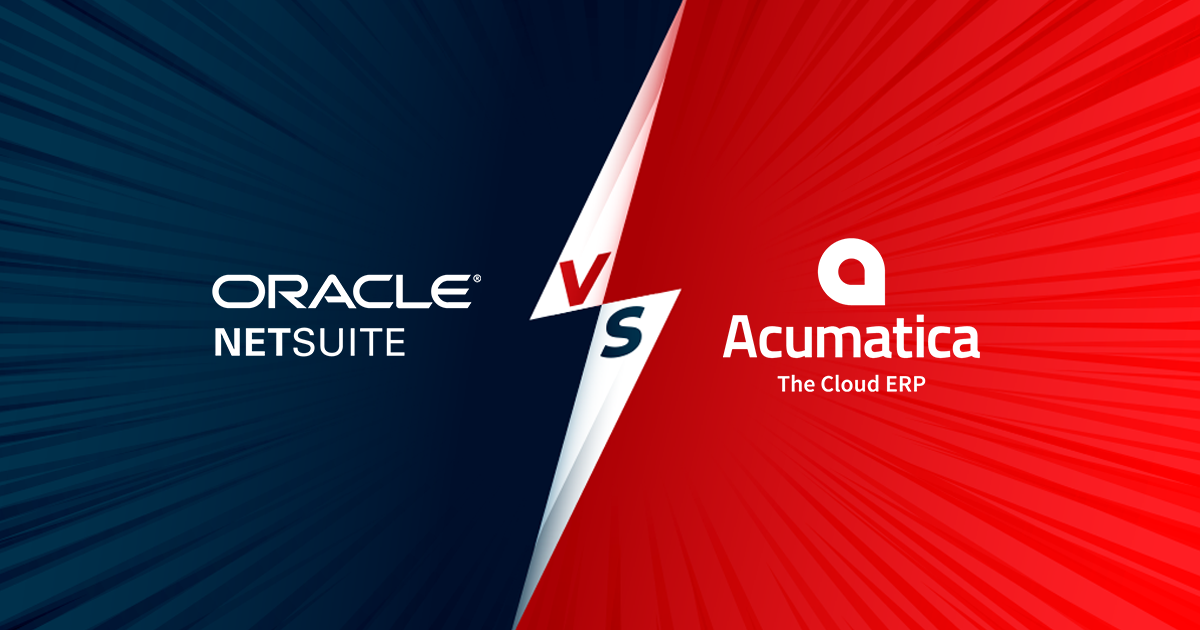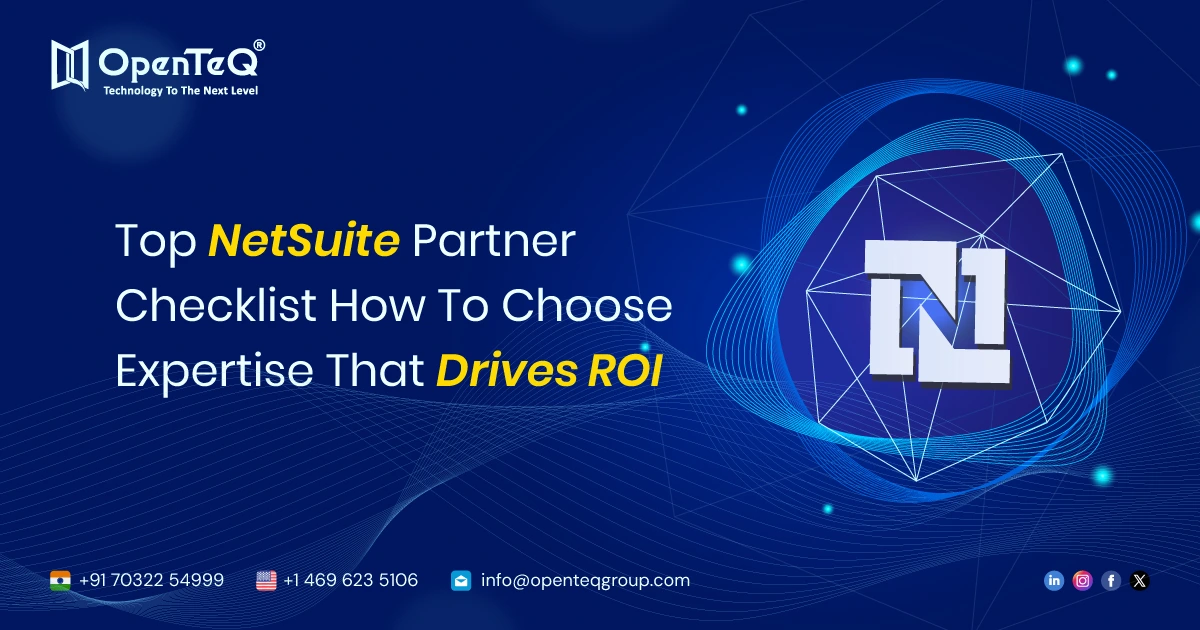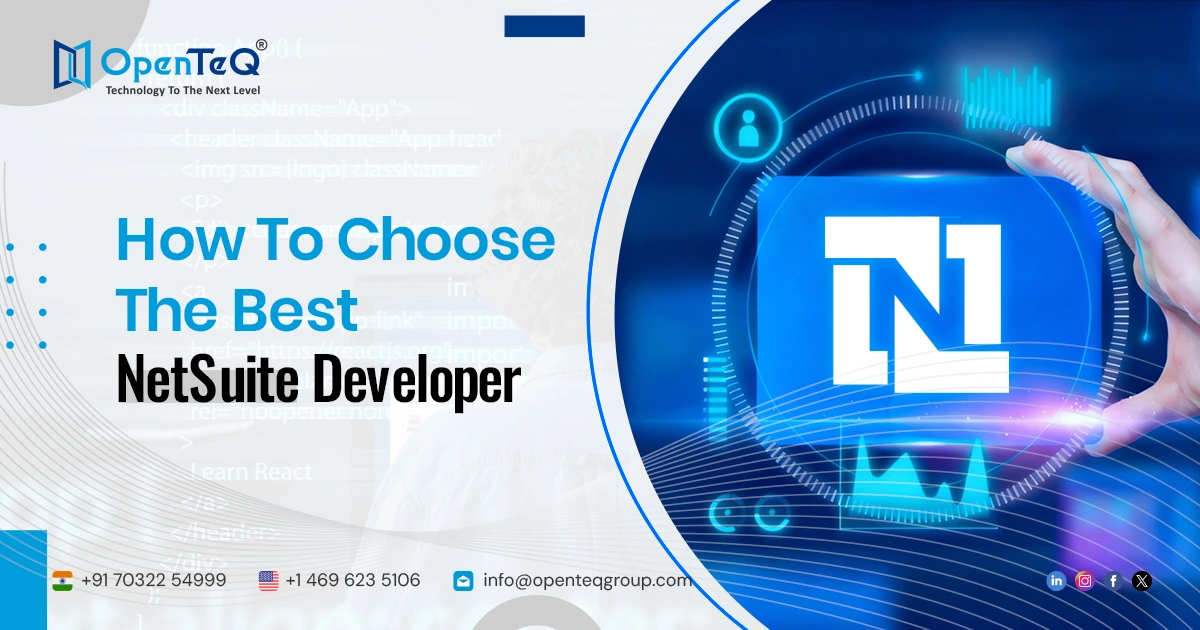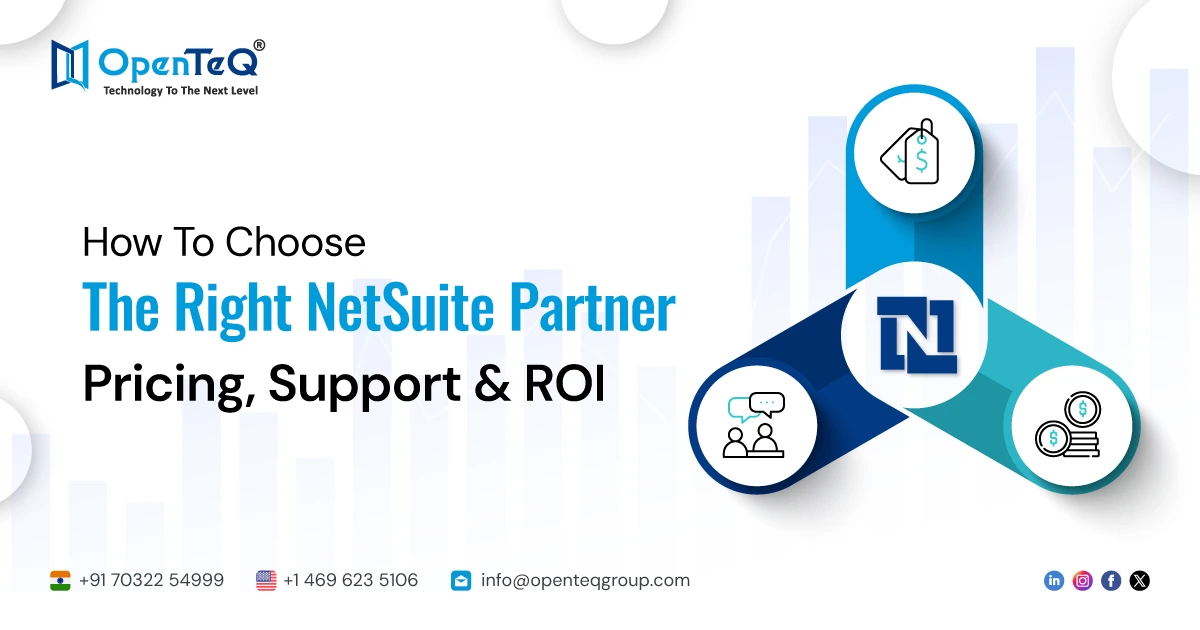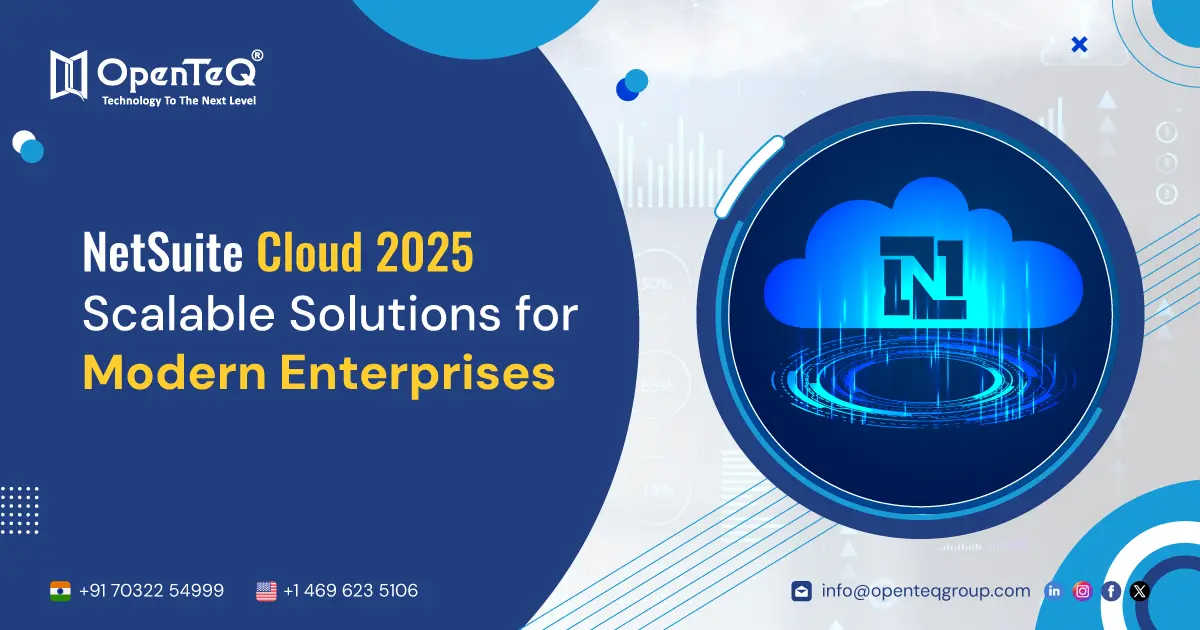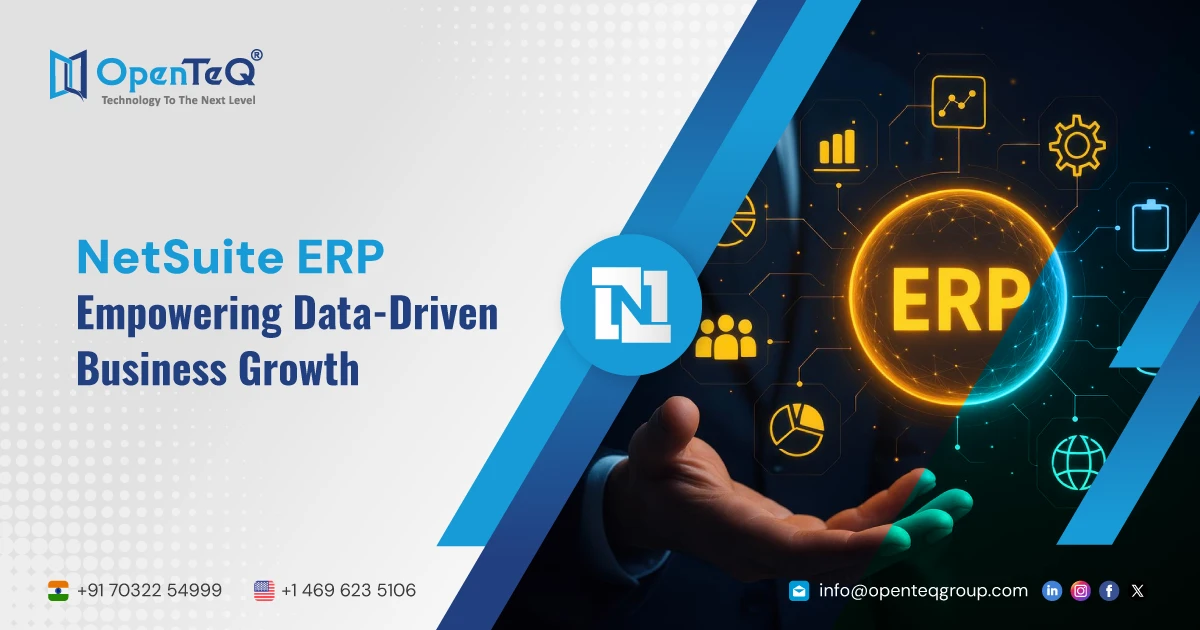NetSuite vs Acumatica : A Thorough and Extensive Comparison of 2 ERP Systems!
IDC Marketspace Research named NetSuite the best cloud ERP for medium-sized organizations.
There are currently various ERP software companies on the market. There are many, including Microsoft, Sage, SAP, Acumatica, and Deltek. NetSuite was named the best cloud ERP vendor, being among the top eight vendors offering SAAS ERP suites.
Acumatica has always been a strong challenger and a top vendor. This is why the Oracle Net Suite vs. Acumatica comparison is so evident. Throughout this blog article, we will present these two ERP platforms, explain their value propositions, and highlight major differences.

A Quick Comparison of NetSuite and Acumatica
NetSuite and Acumatica both provide cloud-based SaaS ERP systems. While both provide cloud-based maintenance and upgrades and easy access via web browsers, Acumatica also offers on-premise deployment options.
Despite their similarities, they cater to slightly distinct audiences. NetSuite is better suited for fast-growing businesses and includes multinational management methods such as international taxation and compliance. Although Acumatica lacks these features, many small firms prefer it because of its on-premises architecture option.
How did both platforms begin and expand?
In 1998, an ex-Oracle employee founded NetSuite. It was designed from the start to be a comprehensive software suite for managing all aspects of a business. NETSUITE FOR SMALL BUSINESS Companies and startups around the world pioneered the notion of cloud ERP systems.
NetSuite was acquired by Oracle in 2016, and since then it has continued to evolve quickly, opening multiple new international data centers across the world. It is now the premier ERP platform, with over 28,000 active users in more than 200 countries. Whether you require NETSUITE FOR MANUFACTURING, retail, or supply chain management, the platform has business and process-specific modules to meet your needs.
Acumatica, on the other hand, was founded in 2008 by a group of developers who had previously worked on Microsoft's Solomon ERP system project. Its business was acquired by the private equity finance firm EQT Partners in 2019. It is regarded as one of the top cloud-based ERP companies in the world, with over 10,000 clients.
NetSuite Partners with OpenTeQ Technologies to Streamline Business Operations
Acumatica vs. NetSuite: Vertical Industries
Because business processes, operational workflows, and data-centric tasks vary widely from industry to industry, not all ERP systems and their capabilities and features are appropriate for all industries. Many cloud ERP software systems now have industry-specific ERP editions and other customization capabilities. As a result, each ERP vendor has a key industrial emphasis area.
NetSuite cloud ERP's primary businesses include clothes, footwear, and fashion accessories; food and beverages; restaurants; manufacturing; health and beauty; and others. NETSUITE CONSULTANTS can also advise firms on how to use this ERP platform to meet their individual needs.
Acumatica cloud ERP's key industries are mostly small retailers, small manufacturers, suppliers, and wholesale distributors.
Comparison Based on Features
Both NetSuite and Acumatica provide major ERP features and capabilities for a wide range of business verticals and operations, including financials, customer connections, products, and services.
Let's take a brief look at how NetSuite and Acumatica compare in terms of features and functionality.

Management of Inventory
NetSuite includes a more robust inventory management module that ensures more valuable data-driven insights and controls for fixed assets. NetSuite customers have simple access to a variety of depreciation and costing methods, including average cost, standard cost, Last-In-First-Out (LIFO), First-In-First-Out (FIFO), and a few others. NetSuite inventory management software includes billing, business forecasting, and demand planning functions, as well as barcoding and asset picture tracking. Custom configuration by leading NetSuite implementation partners can further extend these capabilities.
The Acumatica inventory management module also includes a number of tools for depreciation and cost methods. The only disadvantage is that it does not support the Last-In-First-Out (LIFO) ordering scheme. However, it has additional features such as integrated billing, a barcode scanner, and so forth.
Clients can request a Materials Resource Planning (MRP) suite from both NetSuite and Acumatica.
Financial Administration
Some financial and accounting software products, such as QuickBooks, remain popular among small and medium-sized businesses. However, these solutions lack sophisticated reporting and analytics capabilities. NetSuite and Acumatica both offer extensive financial management and accounting capabilities, such as general ledgers, financial reporting, payroll administration, custom dashboards, vendor listings, and so on.
Each software provides a personalized dashboard with optimal ease of navigation to follow preferences. Both ERP systems also allow company clients to tailor their workflows to their own needs.
Operation of International Business
NetSuite clearly outperforms Acumatica in terms of characteristics required for international business operations. If a company wishes to grow its international operations around the world, NetSuite, which supports 190 currencies and 27 international languages, is a better option.
NetSuite clearly has an advantage over Acumatica, especially when it comes to features that are necessary for international business operations.
On the other hand, Acumatica clients must manually reassess the currencies for transactions. Although Acumatica has built-in capabilities for localization and translation, these do not guarantee smooth cross-border business operations free from linguistic and currency hurdles.
NetSuite is a better software option for companies with multiple overseas branches as well. Through the provision of multi-layered subsidiary administration within a single software framework, NetSuite guarantees more efficient operations across numerous global subsidiaries.
Another point worth mentioning is that Acumatica deviates from some accounting rules and principles, including International Financial Reporting Rules (IFRS) and Generally Accepted Accounting Principles (GAAP), in contrast to NetSuite.
CRM Expertise
Important CRM capabilities, including integrated marketing tools, salesforce automation, campaign management, customer care and support automation, and a customer self-service portal, are offered by both Acumatica and NetSuite. For centralized CRM management, NetSuite Integration Services may also combine legacy and third-party CRM applications.

Management of Human Resources (HR)
One of Acumatica's primary features is payroll administration straight out of the box; partner support is required for the remaining HRM solutions.
In comparison, NetSuite offers a number of essential HR administration features right out of the box. NetSuite provides the SuitePeople module with all the features and capabilities needed by HR managers, including HR reporting, employee self-service, employee management, productivity management, and performance management, in addition to complete payroll processing and a few essential HR management functions.
Analytics and reporting
Pre-configured reporting options, data analytics, business intelligence, and customizable dashboards are all provided by Acumatica and NetSuite.
You can do self-service reporting with both ERP systems. When integrating customization with Acumatica, business users don't need to create any code. However, there is very little room for customization inside the workflow.
Conversely, NetSuite enables fine-grained customization with or without the need for programming. In contrast to Acumatica's complex sub-ledger architecture, NetSuite simplifies things by storing all data in a single database. A user does not need to use several tabs to display information; all information may be accessed in a single view by just using the global search function. In comparison to Acumatica users, this can also save the workers a significant amount of time.
Price Comparision
Pricing is yet another significant distinction between Acumatica and NetSuite. NetSuite continues to market its software through its alliance partners directly, following a standard and uncomplicated strategy. In contrast, Acumatica has a Pay You Use business model where customers only pay for the services they really utilize.
Acumatica's pricing approach is highly regarded due to its increased flexibility. All you must do is pay for the application you use, and you may make your choice based on your anticipated usage. It seems that the concept is more adaptable and easier to use for companies of all kinds. This is only beneficial if you view flexibility as your top priority.

Why Shall Invest in NetSuite?
As per the IDC analysis referenced at the start of this article, NetSuite is thought to possess the capability to entirely revolutionize an organization via process automation. Using unified enterprise technologies that encompass numerous processes, NetSuite's business process automation package guarantees speedier global corporate expansion.
Because of its strong modules that cover every company process and extra features and capabilities to meet the needs of expanding internationally, NetSuite leads the cloud ERP industry. To effectively define its growth stories, a firm seeking to expand globally through cloud ERP should consider NetSuite as the most all-encompassing, complete, scalable, and customizable platform available.
End Note
Let's agree that Acumatica is a feature-rich cloud ERP solution that, although not perfect, is comparable to NetSuite in a number of areas. Because of its extensive and strong feature set, high level of customization, and features that support global business operations, NetSuite continues to outperform Acumatica by a significant margin.
About OpenTeQ
With a global reach, OpenTeQ is a top NETSUITE ALLIANCE PARTNER.
Would you like to discover why NetSuite is the industry leader in cloud ERP using real-world examples and case studies of our NetSuite projects? We're all awake and ready to hear from you. Send us an email with your question, please.
